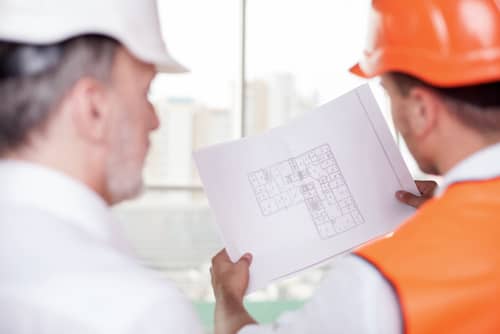Here are a dozen upgrades that new homes, in most jurisdictions have because they have to, but that yours might lack because it was built when building codes were more lax. You might consider voluntarily getting your home up to code in at least some of these areas.

- Add hard-wired smoke alarms in every bedroom and in the hallway outside of sleeping areas. The battery-operated models that most older homes use too often don’t work because we don’t change the batteries often enough. Many homeowners have only one smoke detector on each floor, which isn’t enough, according to today’s building codes. Choose detectors with battery backup so they’ll still work if the electricity goes out. Interconnected detectors go off all over the house no matter where in the home one of them detects a fire.
- Protect your family from electrocution by installing ground-fault circuit interrupter receptacles in your bathrooms, kitchen, laundry room, garage and any other space where both water and electricity are available. They will protect you from shock if you come into contact with water while you’re using an electrical device. They cost only about $15 to $25 per outlet.
- Go a step further and add an arc fault circuit interrupter in every sleeping room. AFCIs detect a short circuit and can prevent electrical fires and sparks that can occur in electric devices. If you add a new bedroom or convert a game room to a sleeping room, you’ll be required to add AFCIs.
- Consider replacing your shower valve, and choose an anti-scald model (also called a pressure-balance valve). If the cold water pressure drops, maybe when someone flushes the toilet while someone else is in the shower, it will keep the person in the shower from getting scalded by dropping the hot water pressure along with the cold.
- Switch your old, water-guzzling toilet for a low-water model. The original toilet that came with your house could flush as much as five gallons at a time, while newer models may use just 1.6 gallons per flush. The most efficient versions use less than one gallon per flush, and models with a dual-flush feature use even less for flushing liquids.
- Replace windows near stairs and in bathrooms with tempered or safety-glazed glass. Building codes require it in new homes that feature windows near stairs and doorways, in showers or anyplace where someone could slip and fall into the glass.
- While you’re changing your windows, trade your single-pane windows for double-pane versions. You’ll save energy, lower your air conditioning and heating bills, and dull the outdoor noise a bit.
- Another window consideration: The windows in new homes are probably bigger than yours. The code calls for windows with 5.7 square feet of open, removable area (about 3 feet by 5 feet)—big enough for a firefighter and his air tank to fit through. When you replace your windows, you might have to change their size.
- Check your insulation. Lots of older Southwestern homes don’t have any, and many have too little. A well-insulated attic will stop the 100-plus-degree air that collects up there during the summer from infiltrating your comfortable, air-conditioned home. A guide: Aim for R38 in the ceiling; R13 in walls; and R19 in the crawl space floor.
- Install handrails on all staircases, indoors and out. More people are hurt on the stairs than anywhere else in the home.
- Seal your air conditioner’s ductwork with a flexible mastic, around all joints. A house built today has to have sealed ductwork, but older homes only required screws at connections. Electric utilities sometimes offer discounts and even freebies to customers who seal their ducts.
- Make sure your water heater has a temperature and pressure relief valve installed and that it is properly plumbed to the exterior of your home.
###















